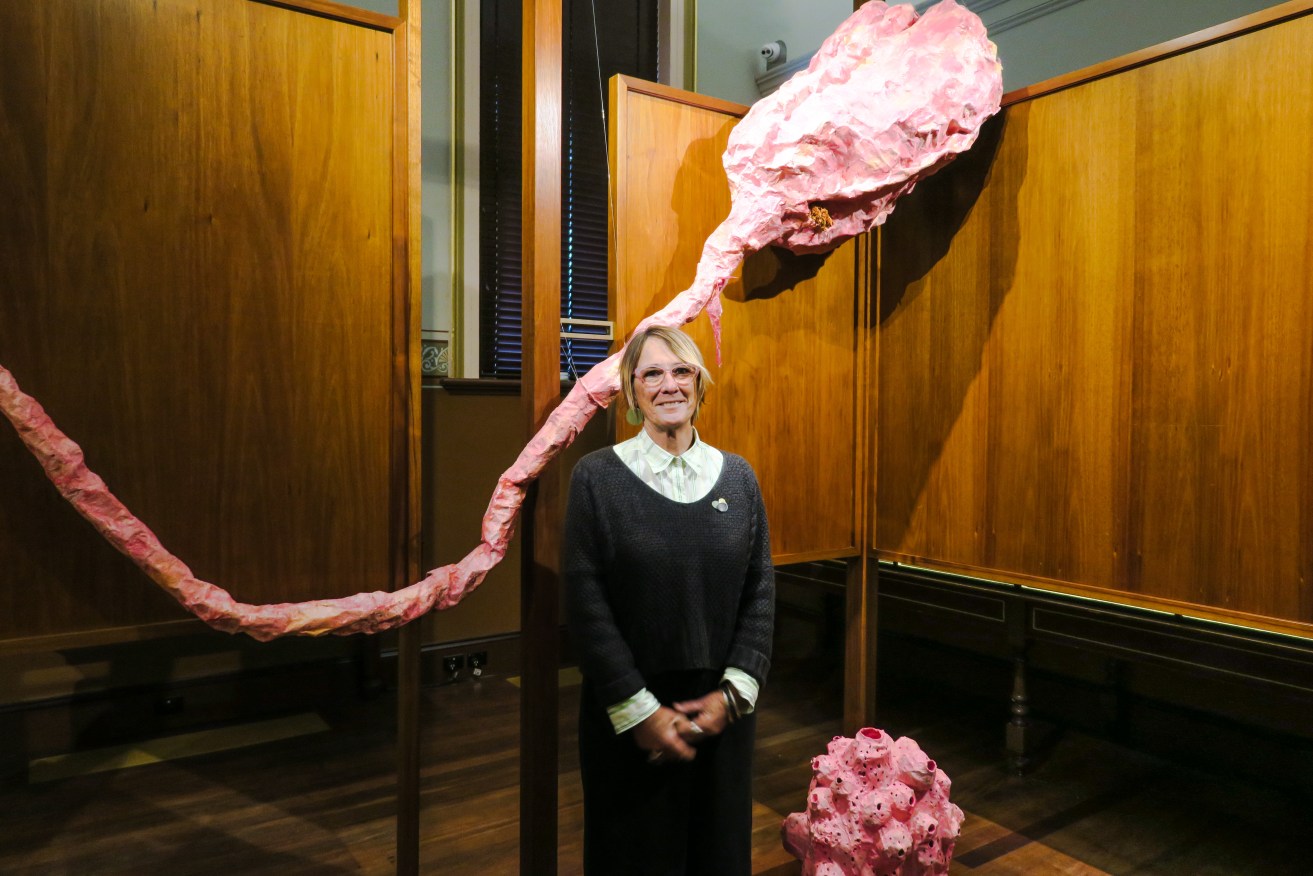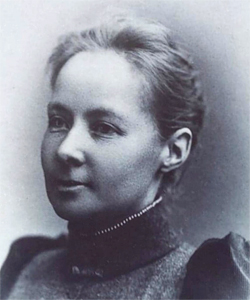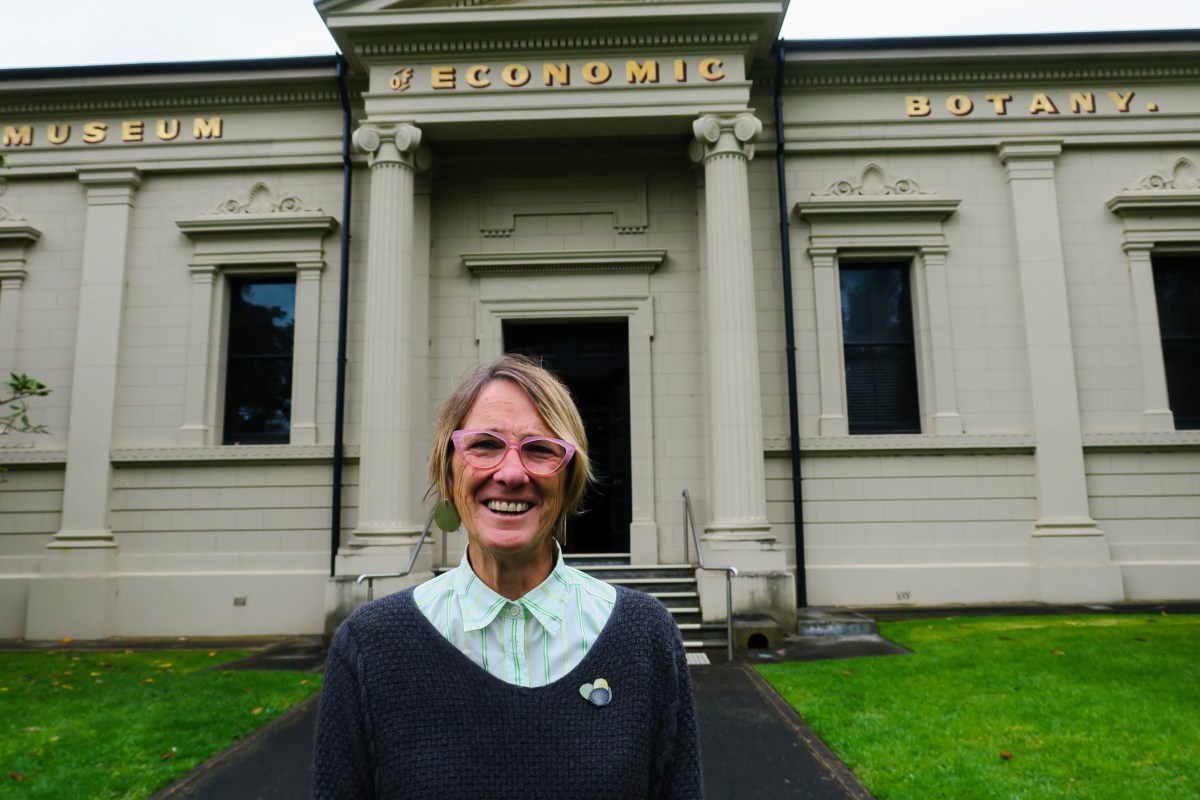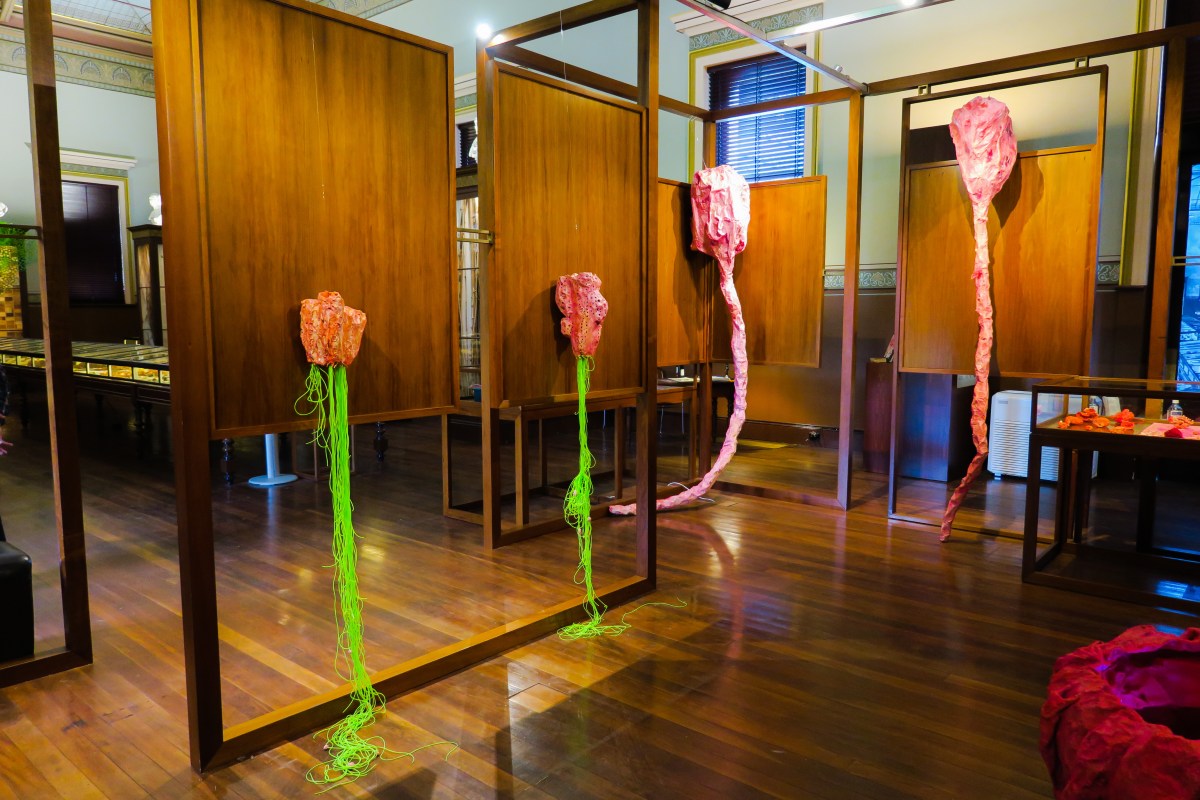The aquatic takeover in a Botanic Gardens institution
A strange and colourful world has taken over the Santos Museum of Economic Botany through Chris De Rosa’s Seaweeding Exhibition, a tribute to pioneering women in science and a climate-change warning.

Chris De Rosa at the Santos Museum of Economic Botany with a large paper-mache sculpture and a smaller spongia inspired by other paper-mache mushrooms which inhabit the museum year round. Photo: Jason Katsaras / InReview
Port Elliot resident and multi-disciplinary artist Chris De Rosa has long trawled the beaches surrounding her home for spongia, seaweed, algae and all manner of mysterious artefacts which wash up on shore.
This passion, and an affinity for the work of a Victorian-era seaweed collector, sees her current exhibition – nestled in the centre of the Adelaide Botanic Garden – come to life.
De Rosa is particularly inspired by Jessie Hussey, born in Goolwa in 1862, who sent large numbers of both algae and terrestrial vascular plants away for botanical analysis throughout her lifetime, contributing greatly to the study and becoming internationally known for her collecting. This was despite suffering an affliction at 27 which left her almost deaf and negatively affected her overall health.

Jessie Louisa (Louise) Hussey. Photo: Australian National Herbarium
Visitors to Seaweeding can expect to see the Santos Museum of Economic Botany brought to life by the large alien-like paper-mache sculptures of underwater plant life which engulf the room.
Some of Hussey’s more than 100-year-old specimens are also on display alongside De Rosa’s art.
De Rosa says she feels an affinity and sympathy for Hussey due to her relegation, as a woman, to the back bench of society, as well as for her persistence to continue collecting despite both this and her ongoing health challenges.
“She was treated like a frivolous woman. Seaweeding was considered a lady-like venture appropriate for women to partake in.
“I think she was an amazing woman who had this disability and despite all of that was trawling for specimens.
“I imagine the difficulty of being a woman, wearing that Victorian garb, trawling through the beach and also where the orchards grew in the hills; it would have been really dense.
“Did she go there on her own? There’s many questions that I can’t work out – but obviously she was an adventurer and a very strong-willed, interested woman despite all the things that were against her.”

Chris De Rosa at the Santos Museum of Economic Botany. Photo: Jason Katsaras / InReview
As a protest to the attitudes and misogyny that persisted throughout Hussey’s lifetime, De Rosa explains she wanted to cover up the busts of historical male botanists which sit high on the shelves of the museum. After being informed this wan’t an option, De Rosa instead placed floral and spongey elements around them, which “detracts from their power”.
De Rosa’s home in Port Elliot, where she lives with fellow artist Gerry Wedd, sits a mere two-minute walk from Jessie Hussey’s original home, which now operates as a butcher’s shop.

Chris De Rosa’s Seaweeding exhibition at the Santos Museum of Economic Botany. Photo: Jason Katsaras / InReview
“Most of the women who collected were middle-class, well-off people, which makes me think that even though she [Hussey] was unfortunate, she was also fortunate in that she had the ability to do it.
“She was supposedly this very caring woman; she cared for sick people in Port Elliot, but part of me also wonders if she ever had any contact with Ngarrindjeri people.”
As well as paying homage to the amateur algae collector, Seaweeding also reflects the overwhelming power of nature.
De Rosa says that after reading JG Ballard’s The Drowned World, she aimed to bring to life a vision of a post-climate-change catastrophe.
“It’s almost a warning. I wanted to present these overgrown, over-fertilised and over-sunned plants.
“What I’m hoping to do is give people a greater awareness of the importance of the coastline and caring for it.”
Wander through Seaweeding and you will eventually discover a large spongia in the centre of the display, with a screen inside showing the moving image feature of the exhibition.
The Deeper You Dive The Stranger It Gets is the result of a collaboration between Mickey Mason, sound composer Giuseppe Faraone, costume designer Susi Benger and performer Honor Freeman.
To film this work, De Rosa swum out with the collaborators to The Sisters – a rocky outcrop off the coast of Horseshoe Bay at Port Elliot. After first being greeted by a resident seal, the group was able to film a unique piece on Super 8 film which sees a human body engulfed by a strange oceanic organism.
“I wanted a human body to be almost overwhelmed by these barnacles covering it,” De Rosa says.
“In the end I haven’t decided if they become overwhelmed by it or if it becomes a part of them, [and] they become a part of it.”
Seaweeding is at the Santos Museum of Economic Botany until January 29. It is open from 10am-4pm, Wednesday to Sunday.




